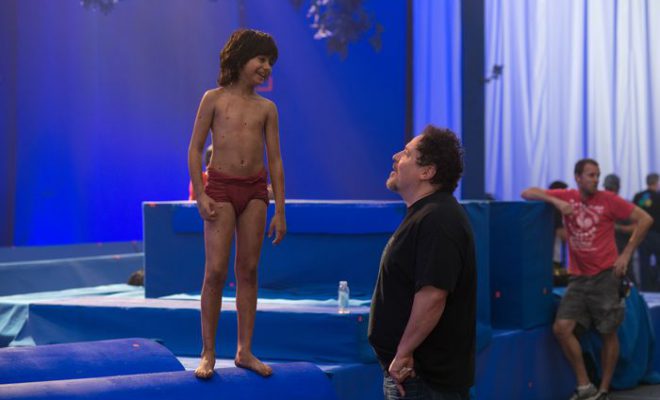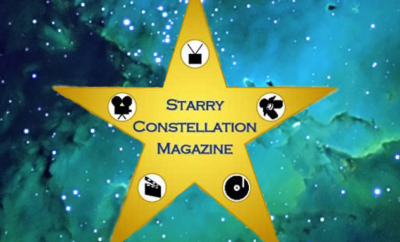
Interviews
Jon Favreau – The Jungle Book
By: Jeff Flocken
North American Regional Director of the International Fund for Animal Welfare
Walt Disney’s live-action adaptation of Rudyard Kipling’s The Jungle Book continues to break box-office records, and has been greeted with adoration by both fans and critics. The movie –which showcases an array of incredible animals—features the unique and highly endangered pangolin as one of the computer-generated animal characters who drops in on Mowgli the Man-cub during his adventures in the jungles of Central Asia.
Protecting pangolins from the wildlife trade is a big part of the work I do at IFAW and also as a member of the IUCN Pangolin Specialist Group. I was fortunate enough to be able to meet with The Jungle Book director Jon Favreau recently while I was in Los Angeles, and found out how the inclusion of the pangolin in the movie came about.
Q) Jon, what motivated you to include a pangolin in The Jungle Book movie?
A) When we were meeting with the LA Zoo — they were helping us with our research for the film — they suggested that we consider featuring the pangolin because they live in that part of the world and they are an endangered species. We said that we would consider it and began doing research. I had never heard of pangolins before. When our art department pulled images, we were inspired by this interesting creature. We wrote the pangolin into the script and as the character developed, we became quite enamored with him.
Q) What was the reaction at Disney when you told them you wanted to include a pangolin character?
A) We hadn’t introduced Disney to the idea of the character until we were pretty far down the road. He was a supporting player but the scenes that I included him in had a lot of comedic impact. He quickly became a favorite in the screenings and I encouraged Disney to include him in their merchandizing. I explained that pangolins were endangered and that we should draw as much attention as we could to this species so that people might become aware of the danger they are in. The pangolin was added to the merchandise line-up in a commitment to raise awareness for the pangolin and the overall efforts of the Disney Conservation Fund.
Q) There is a great line in the movie – both funny and educational – where Baloo the Bear jokingly threatens the pangolin by telling him he’s never been a more endangered species than at that moment. Where did that line come from?
A) When I was recording with Bill Murray (voice of Baloo the Bear), the film only existed in my imagination and in rough sketches. In prepping Bill with backstory about the characters that were his friends, I gave him some background on the pangolin. The line was one of many that he improvised and it played really well in the scene. It also had the added benefit of drawing attention to the pangolins plight while still being entertaining.
Q) Do you think that this movie – which used only CGI animated animals instead of live animals – will be a game-changer for the way animals are used in Hollywood going forward?
A) I think we’ve reached a point where computer generated animals make a lot of sense. It’s safer for the people and it’s safer for the animals. As a director this method gives me a lot more creative latitude. Technology is always offering opportunities to allow filmmakers to tell better stories and to make the set a safer place for all those involved, be it people or animals.
Q) The pangolin was one of the few speaking animals in the movie that didn’t have a name or a credited actor voicing the character. Was this on purpose?
A) He actually did have a name, it was Mr. Pangolin. He was one of many unbilled cameos in the film.
Q) With the incredible success of The Jungle Book movie, what is your hope for how this could impact the future of pangolins?
A) The pangolin is one of many endangered species featured in the film. I voice a Pygmy Hog, which is another species worth mentioning. I think it’s up to our generation and that of our children to consider the relationship that we have with nature. The way we interact with the world around us is going to determine to what extent that which came before us remains for generations to come. Educating kids and introducing them to these species might give them an opportunity to continue to exist as they have. It would be sad if the only examples of these creatures left in the world are the digital ones.
All eight species of pangolins are considered imperiled, however there are a number of opportunities coming up for greater protections – including a recent petition to list pangolins as Endangered under the US Endangered Species Act, a motion for a resolution calling for global protection of pangolins at the upcoming IUCN World Conservation Congress, and a suite of proposals for the CITES Conference of the Parties this fall, looking to give all pangolins the strongest protections possible from international commercial trade. For more information on how you can help pangolins, go to ifaw.org/pangolin.




You must be logged in to post a comment Login